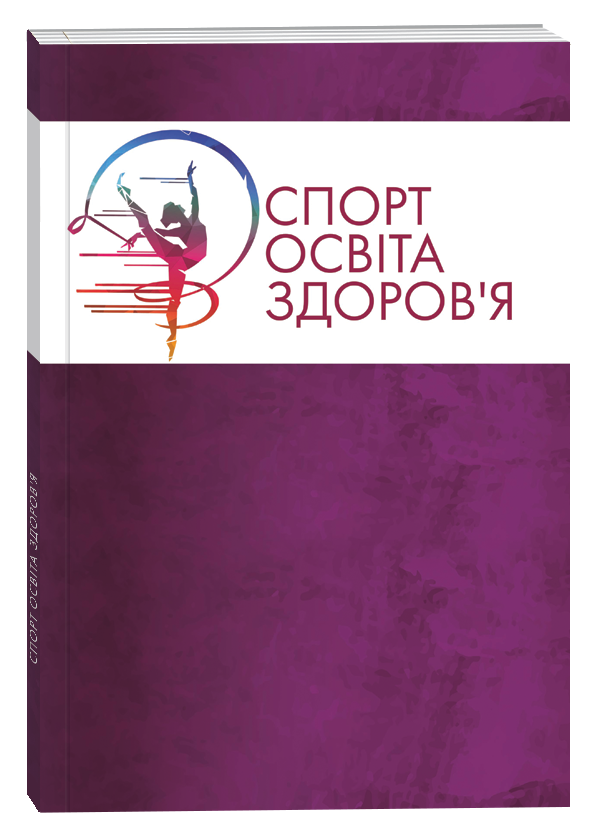FEATURES OF PHYSICAL THERAPY FOR PATIENTS WITH EPILEPSY AND CORRESPONDING NEUROLOGICAL DISORDERS
DOI:
https://doi.org/10.32782/sports-education/2025-2-9Keywords:
epilepsy, ataxia, dystonia, hypertension, disorders of the central and peripheral nervous system.Abstract
Epilepsy is characterized as chronical neurological disorder, which creates electrical predisposition in the brain to generate seizure activity, dystonic posturing and generalized seizures. Epilepsy creates general abnormalities and dysfunctions in the work of neurological system and musculoskeletal system. The most pronounced consequences or clinical manifestations of the disease are impaired gait and deterioration of postural control, loss of muscle tone with possible formation of paresis. In temporal lobe epilepsy (TLE), tonic or clonic motor behavior (TCB) is associated with automatisms of dystonic manifestation, i.e. deviation of the head and torso in the direction opposite to the localization of the nervous outburst in the corresponding temporal region.Aim: Critical analysis of moderns approaches to treatment of epilepsy with comorbid neurological disorders.Materials and research methods. Analysis and assessment of current scientific and methodological literature on the topic of practical implementation of the selection of the most effective methods and methods of physical therapy for patients with epilepsy and associated neurological disorders.Results. Analysis of the available literature on this topic concluded that there are studies about the effectiveness of physical therapy in patients with epilepsy and associated neurological disorders, but there is a lack of comparison between different approaches to treatment, therefore there is a necessity to generalise curent methods of rehabilitation in order to create more precise methodology of physical therapy of patients with epilepsy. Analyzing the research on the effectiveness of therapy, it is possible to establish the fact that there are many controversial and insufficient studies of nutrition, sleep, the terms and obligations of therapy. The study found that the use of physical therapy methods and tools, as well as the use of therapeutic exercises for patients with epilepsy and concomitant neurological disorders, create positive dynamics in the functional features of the patient’s clinical condition. At the same time, it has been found that the process of physical therapy has an impact on all groups of patients with different clinical cases through nervous and trophic action, thus restoring damaged or lost motor functions.
References
1. Analysis of the global burden of disease study highlights the global, regional, and national trends of idiopathic epilepsy epidemiology from 1990 to 2019 / Y.-j. Zhang et al. Preventive Medicine Reports. 2023. Vol. 36. P. 102522. URL: https://doi.org/10.1016/j.pmedr.2023.102522 (date of access: 29.12.2024).
2. Awareness of Dystonic Posture in Patients With Cervical Dystonia / G. Ferrazzano et al. Frontiers in Psychology. 2020. Vol. 11. URL: https://doi.org/10.3389/fpsyg.2020.01434 (date of access: 29.12.2024).
3. Beghi E. The Epidemiology of Epilepsy. Neuroepidemiology. 2019. Vol. 54, Suppl. 2. P. 185–191. URL: https://doi.org/10.1159/000503831 (date of access: 29.12.2024).
4. Cloud L.J., Jinnah H. Treatment strategies for dystonia. Expert Opinion on Pharmacotherapy. 2009. Vol. 11, № 1. P. 5–15. URL: https://doi.org/10.1517/14656560903426171 (date of access: 29.12.2024).
5. Dystonia, clinical lateralization, and regional blood flow changes in temporal lobe seizures / M.R. Newton et al. Neurology. 1992. Vol. 42, № 2. P. 371. URL: https://doi.org/10.1212/wnl.42.2.371 (date of access: 29.12.2024).
6. Ebrahim A.A., Tungu A. Neuromodulation for temporal lobe epilepsy: a scoping review. Acta Epileptologica. 2022. Vol. 4, № 1. URL: https://doi.org/10.1186/s42494-022-00086-0 (date of access: 29.12.2024).
7. Editorial: Epidemiology of epilepsy and seizures / Z. Chen et al. Frontiers in Epidemiology. 2023. Vol. 3. URL: https://doi.org/10.3389/fepid.2023.1273163 (date of access: 29.12.2024).
8. Effects of physical exercise in people with epilepsy: A systematic review and meta-analysis / I. Duñabeitia et al. Epilepsy & Behavior. 2022. Vol. 137. P. 108959. URL: https://doi.org/10.1016/j.yebeh.2022.108959 (date of access: 29.12.2024).
9. Effects of physical exercise in people with epilepsy: A systematic review and meta-analysis / I. Duñabeitia et al. Epilepsy & Behavior. 2022. Vol. 137. P. 108959. URL: https://doi.org/10.1016/j.yebeh.2022.108959 (date of access: 29.12.2024).
10. Epileptic Seizures and Epilepsy: Definitions Proposed by the International League Against Epilepsy (ILAE) and the International Bureau for Epilepsy (IBE) / R. S. Fisher et al. Epilepsia. 2005. Vol. 46, № 4. P. 470–472. URL: https://doi.org/10.1111/j.0013-9580.2005.66104.x (date of access: 29.12.2024).
11. Ictal dystonia and secondary generalization in temporal lobe seizures: A video-EEG study / L. Popovic et al. Epilepsy & Behavior. 2012. Vol. 25, № 4. P. 501–504. URL: https://doi.org/10.1016/j.yebeh.2012.07.008 (date of access: 29.12.2024).
12. Ictal spread of medial temporal lobe seizures with and without secondary generalization: An intracranial electroencephalography analysis / J.Y. Yoo et al. Epilepsia. 2014. Vol. 55, № 2. P. 289–295. URL: https://doi.org/10.1111/epi.12505 (date of access: 29.12.2024).
13. Impact of Physiotherapy in the Treatment of Pain in Cervical Dystonia / C. Jacksch et al. Tremor and Other Hyperkinetic Movements. 2024. Vol. 14. P. 11. URL: https://doi.org/10.5334/tohm.867 (date of access: 29.12.2024).
14. Instrumental Timed Up and Go test discloses abnormalities in patients with Cervical Dystonia / C. Celletti et al. Clinical Biomechanics. 2021. Vol. 90. P. 105493. URL: https://doi.org/10.1016/j.clinbiomech.2021.105493 (date of access: 29.12.2024).
15. Knowledge and current practices of physiotherapists on the physical activity and exercise in the rehabilitation of children with epileptic seizures / A. M. Yakasai et al. Epilepsy & Behavior. 2020. Vol. 104. P. 106891. URL: https://doi.org/10.1016/j.yebeh.2019.106891 (date of access: 29.12.2024).
16. Mario Arida R., Alexandre Scorza F., Abrão Cavalheiro E. Role of Physical Exercise as Complementary Treatment for Epilepsy and other Brain Disorders. Current Pharmaceutical Design. 2013. Vol. 19, № 38. P. 6720–6725. URL: https://doi.org/10.2174/1381612811319380004 (date of access: 29.12.2024).
17..Neurorehabilitation in dystonia: a holistic perspective / L. V. Bradnam et al. Journal of Neural Transmission. 2020. URL: https://doi.org/10.1007/s00702-020-02265-0 (date of access: 29.12.2024).
18. Scharfman H.E. The neurobiology of epilepsy. Current Neurology and Neuroscience Reports. 2007. Vol. 7, № 4. P. 348–354. URL: https://doi.org/10.1007/s11910-007-0053-z (date of access: 29.12.2024).
19. Simultaneous Treatment of Epilepsy and Secondary Dystonia After Anterior Temporal Lobectomy and Amygdalohippocampectomy / L. Rasouli et al. World Neurosurgery. 2018. Vol. 117. P. 439–442. URL: https://doi.org/10.1016/j.wneu.2018.04.003 (date of access: 29.12.2024).
20. Systematic Review of Rehabilitation in Focal Dystonias: Classification and Recommendations / C.N. Prudente et al. Movement Disorders Clinical Practice. 2018. Vol. 5, № 3. P. 237–245. URL: https://doi.org/10.1002/mdc3.12574 (date of access: 29.12.2024).


